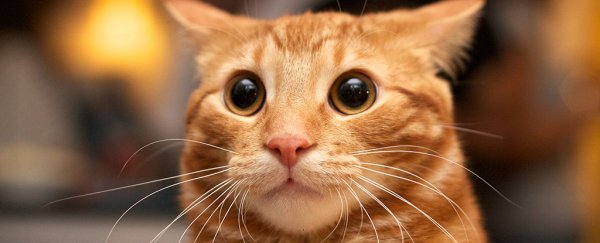As cats have become domesticated over the last 10,000 years or so, their brains have shrunk significantly in size, a new study confirms – a finding that could lead to important new insights into how animals adapt when they start being regularly kept by human beings.
Researchers compared the size of craniums (an indicator of brain size) between domestic cats (Felis catus) and wild cats from Europe and Africa, now genetically confirmed to be the ancestral species that domestic cats have slowly been evolving from.
The team also looked at hybrids of wild and domestic cats, finding that their brain sizes fell in between the measurements for the other two groups – another indication that it's the domestication that's leading to the changes.
"Our data indicates that domestic cats indeed, have smaller cranial volumes (implying smaller brains) relative to both European wildcats (Felis silvestris) and the wild ancestors of domestic cats, the African wildcats (Felis lybica), verifying older results," the researchers explain in their new paper.
"We further found that hybrids of domestic cats and European wildcats have cranial volumes that cluster between those of the two parent species."
Cat brain size is something that researchers have been looking into since the 1960s and 1970s, and this trend of smaller brains appearing in domesticated animals has also been observed in sheep, dogs, and rabbits. It certainly seems that something significant is going on here.
The researchers put forward an existing idea that natural selection for tameness in domestication leads to the production of fewer neural crest cells in the animals (linked to excitability and fear). That in turn could feasibly lead to changes in stress response, brain size, and overall body morphology.
Palate size was also examined, but there was no significant change between domestic and wild cats in that area. There has been some discussion that a reduction in neural crest cells should lead to a shorter snout length as well as a smaller size of cranium, but that wasn't seen in this set of data.
While the conclusions of the study aren't completely new, they do update research that's decades old in some cases, giving scientists working on theories of domestication some fresh data to interpret.
"Brain size comparisons are often based on old, inaccessible literature and in some cases drew comparisons between domestic animals and wild species that are no longer thought to represent the true progenitor species of the domestic species in question," the researchers write.
One suggestion that the study authors don't agree with is the claim that cats are currently only 'semi-domesticated' compared with, say, dogs – a view suggesting that cats choose to be with humans rather than the other way around, and so can't be considered as fully domesticated.
This study points to how cats have proved their usefulness in the past, on farms and on ships, and that their link with people is about more than felines simply looking for an easy food source. Domestic cats continue to be chosen as pets based on their temperament, the researchers say, making them a suitable subject for domestication.
Ultimately, the researchers say that more data on more species needs to be collected to understand fully what effect domestication has had on cats, including their brain size – and that there remain limitations to the information that has been collected so far.
"We must always acknowledge that we are comparing a now (or recently) living population of wild animals to the domestic form, and not the true ancestral population," the scientists explain.
"This will always be a confounding factor since we rarely have access to the ancient population that produced our domestic animals (although ancient DNA can partially ameliorate this issue for genetic comparisons)."
The research has been published in Royal Society Open Science.
